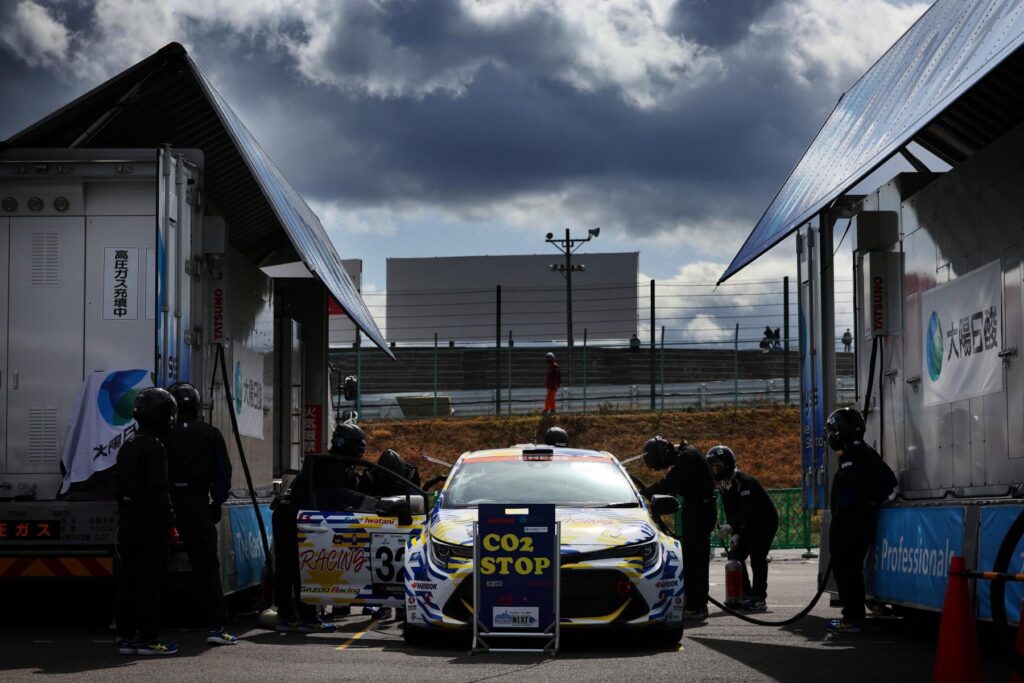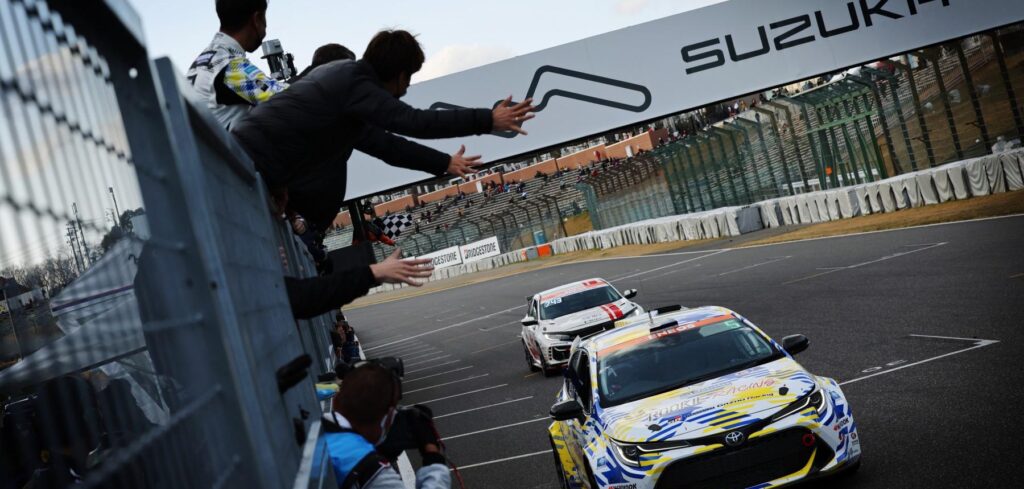Toyota is continuing the development of its hydrogen-fueled Corolla, currently racing in the Super Taikyu series in Japan. Last season, over the six months following its race debut, Toyota’s development team upped the power of the GR Yaris derived 1,600cc engine by 24% and torque by 33%, putting it on a par with gasoline cars in terms of performance.
Since then, the main area of development leading up to the car’s 2022 racing campaign has related to fuel efficiency. Here, the team has managed a 20% improvement without, it says, sacrificing power or torque “Whereas last year at Suzuka we did eight laps on a full tank, now we can run ten,” said GR Vehicle Development Division general manager Tomoya Takahashi.
These gains have apparently hinged on greater utilization of the fuel, specifically, combatting the fact that as fuel volume runs low, injection pressure also drops, making it difficult to use up completely. Toyota states that it has been able to maintain efficient combustion even at lower injection pressures.
Advances have also been made in the refueling process. Alongside the use of larger nozzle and fuel port diameters, refueling pressure has increased from 40MPa to 60MPa. This saw refueling time shortened to just under two minutes by the end of last year. With even higher flow rates, the team has shaved off a further 20 seconds, with a tank fill now taking one and a half minutes.
Toyota also announced that it is pursuing the use of liquid rather than gaseous hydrogen. The main advantage offered by liquid hydrogen is range as liquefying compressed hydrogen gas increases its energy density (amount of energy per unit volume) by a factor of around 1.7.
Additionally, whereas the gaseous hydrogen is currently pressurized to 70MPa in the vehicle, in liquid form it can be used at close to normal pressure. This eliminates the need for round tanks that evenly distribute pressure, improving the car’s fuel storage efficiency. However, temperature control becomes an issue with liquid hydrogen, as it must be kept below its vaporization point of -253℃ to remain liquefied.
Further complicating matters, running with liquid hydrogen fuel is a new endeavor not covered by existing rules which would require some negotiation with regulators. “We can’t use liquefied hydrogen without having all the pieces in place — the car, infrastructure and legislation,” noted Takahashi. “I hope we can get all three ready at some point this season.”




